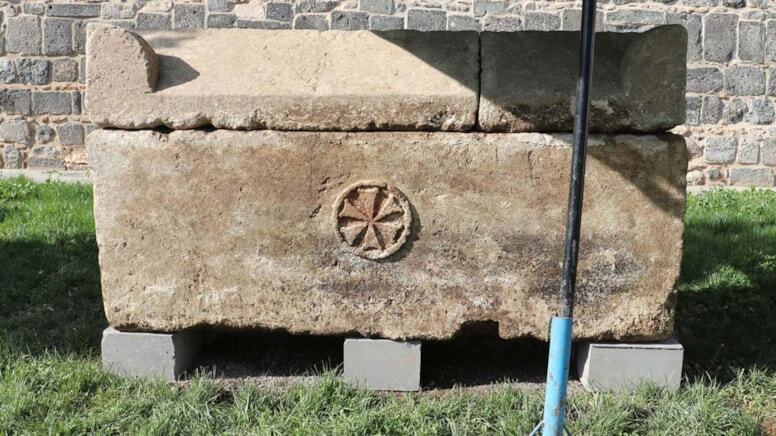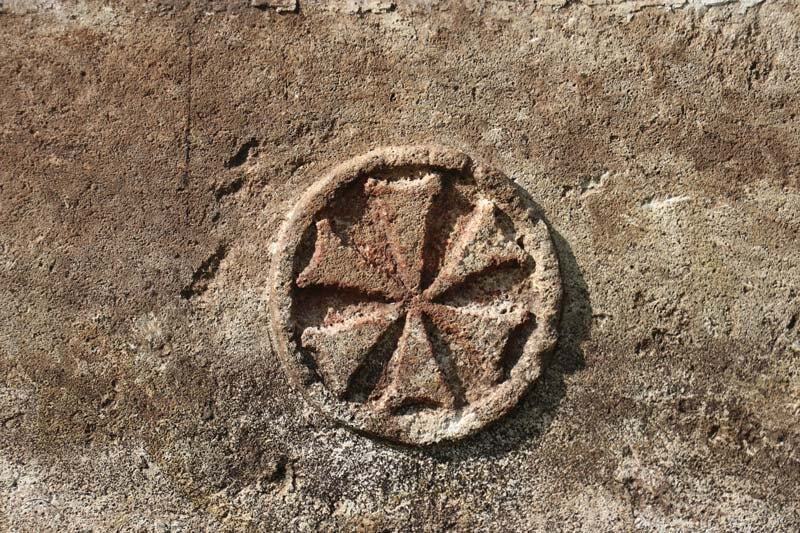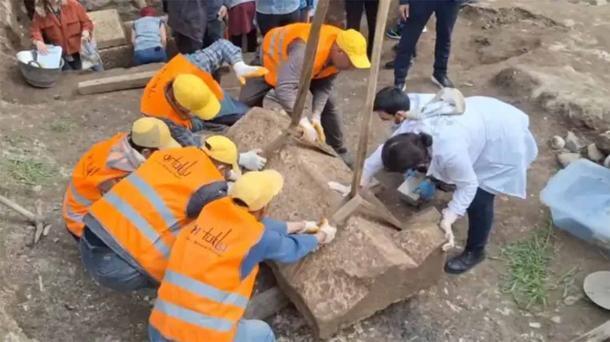News
The first-ever Roman sarcophagus discovered in Turkey: how it can change history. Photo
During excavations in the ancient Turkish city of Diyarbakir, archaeologists made an unprecedented discovery. In the area between the observation tower of the city's famous defensive walls and the Church of St. George, a Roman-era sarcophagus was accidentally found.
The coffin contained the body of an unknown person. This is the first time such a discovery has been made, which gives it important historical significance," Anatolian Archaeology reports.
The fact that a Maltese cross was carved on the side of the sarcophagus, which is well preserved, adds to the intrigue. This religious symbol is associated with medieval Christianity and the Crusades, although in fact its history goes back much further. The cross is unusual in that it has six sides, while most versions of the Maltese cross have either eight or four sides.
The first from a legendary era
The stone coffin, more than two meters long and 82 centimeters high, was carved from a single piece of limestone and topped with two heavy lids. The peculiar style of workmanship helped researchers determine that its authors were masters of the Roman era.
It took a lot of time to get the large sarcophagus buried at a depth of 4.5 meters.
The excavations during which it was found were part of a restoration project in Diyarbakir that is still ongoing. It aims to maintain the three-layer ancient walls surrounding the oldest part of the city.
These walls are more than 5 kilometers long and interspersed with 82 watchtowers, and their original sections could have been built as early as 5,000 years ago. It is known that the Roman Emperor Constantius II expanded and rebuilt the walls in 349, demonstrating how necessary they were for the city, an important center of power in the Roman province of Mesopotamia.
By the way, the tomb with the sarcophagus was not the only find. Archaeologists had previously seen other burials in the area. Given the location of the sarcophagus - near the historic Church of St. George - it can be assumed that the artifacts are connected.
"Most likely, this is the territory of the church cemetery. The excavations are ongoing, and new data may emerge to support our theory," said Cemil Koc, director of the Diyarbakir study.
The skeletal remains of the person removed from the sarcophagus will be subjected to radiocarbon dating. This will help to establish exactly when this person lived and died.
Diyarbakir: an ancient city and a Roman enclave
Diyarbakir is a city located in southeastern Turkey, on the right bank of the Tigris River, in what is now Kurdish territory. It has been occupied for a very long time. Its roots go back several thousand years, and a settlement on this site existed in the Stone Age.
The city was first extensively developed and occupied by the Mithanni Empire. This is an ancient state formed by the Hurrian people, which controlled the lands of southern Turkey and vast areas of the adjacent region from 1550 to 1260 BC.
In 66 B.C., the city was occupied by the Roman Republic and was named Amida. Later it became known as Diyarbey, and in the 7th century - Diyarbakir, in recognition of the merits of the Arab tribe that recaptured the region from the Byzantines in 639.
Diyarbakir reached its peak during the reign of Constantius II, who led the Roman Empire from 337 to 361. In addition to repairing and restoring the defensive walls, the ruler invested in expanding and improving the city's general welfare.
Constantius II tried to unite the Roman people under the rule of Arian Christianity, a type of ancient religion that followed a separate path of development from Catholicism. But he was only partially successful. At that time, the Roman Empire was torn apart by disagreements and was often in a state of civil war.
There is speculation that the Maltese cross found on the recently excavated sarcophagus is somehow connected to these attempts to Christianize the Roman Empire. There is no inscription on the stone coffin that would explain where this symbol came from. However, it certainly indicates a connection to the period when the Romans were Christians.
After the reign of Constantius, Diyarbakir became a pawn in a long conflict between the Romans and the Persians. Control of the city was transferred to one state or the other for several decades, until Diyarbakir became a permanent possession of the Byzantine Empire in the fifth century. It remained a Byzantine outpost until the Muslim conquest in the seventh century, and since then it has remained occupied by followers of the Islamic faith.
After Constantius, the city's black basalt walls were modernized twice more, in the Arab period and in the later Turkish period. Now they consist of three separate layers, which creates considerable difficulties for the Turkish Ministry of Culture and Tourism, which is responsible for the preservation of the walls.
The Roman sarcophagus is now on display in the garden of the Ikale Museum Complex in Diyarbakir. Specialists of the Diyarbakir Regional Laboratory of Restoration and Conservation thoroughly cleaned it.
The undamaged skeleton was sent to the laboratory of Gaziantep University, where an examination should establish the age and sex of the person buried in the sarcophagus. Perhaps this will shed more light on the historical mystery.
The discovery of the Roman era can be considered a happy accident. After all, the excavations that revealed it were carried out solely to drain the water that flooded the nearest ancient observation tower.
Knowing that there are burials at this depth, archaeologists can conduct new research and find out if there are any more surprises waiting for them (for example, a couple of Roman sarcophagi).
Subscribe to the OBOZ.UA channels in Telegram and Viber to keep up with the latest events.






























